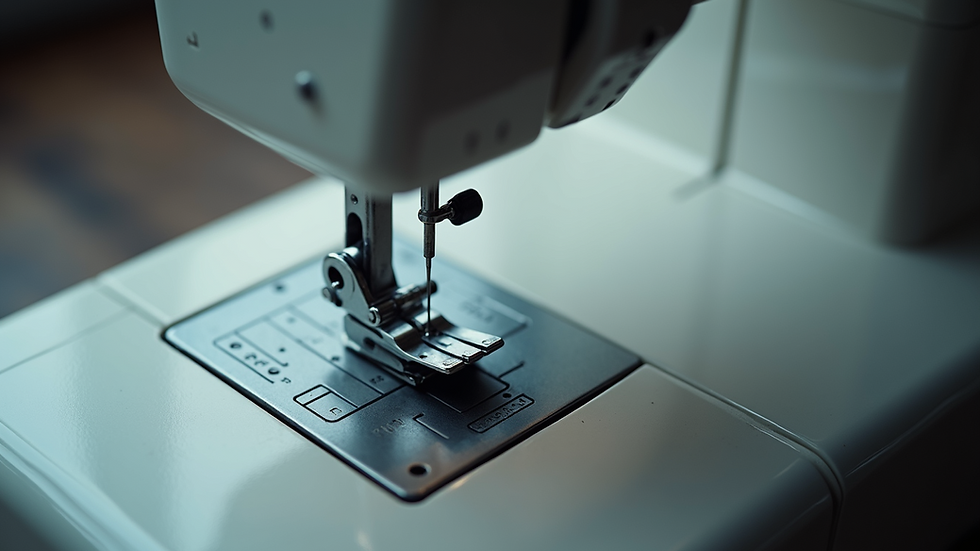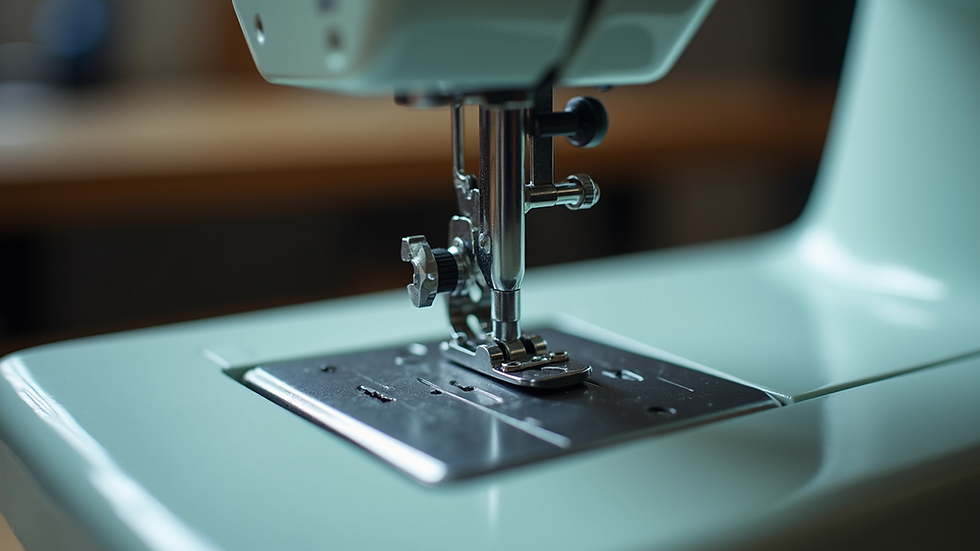Expert Tips for Sewing Machine Repairs
- Angela Swinbourne
- Aug 5
- 4 min read
Sewing machines are the heart of many creative projects. Whether you’re stitching a quilt, mending clothes, or crafting unique gifts, a well-functioning machine is essential. But what happens when your trusty sewing machine starts acting up? Don’t worry! With a few expert tips, you can troubleshoot common issues and keep your machine running smoothly. Plus, if you need professional help, our community hub is here to support you.
How to Repair Sewing Machines: Simple Fixes You Can Try at Home
Before rushing to a repair shop, many sewing machine problems can be fixed with some basic troubleshooting. Here are some easy steps to get you started:
Check the needle: A bent or dull needle can cause skipped stitches or fabric damage. Replace your needle regularly, especially if you notice issues.
Clean the machine: Dust, lint, and thread bits can clog the bobbin area and feed dogs. Use a small brush or compressed air to clean these parts.
Re-thread the machine: Incorrect threading is a common cause of tension problems and thread breakage. Follow your machine’s manual carefully to re-thread both the top thread and bobbin.
Adjust tension settings: If stitches are loose or puckered, try adjusting the tension dial. Test on scrap fabric until the stitches look balanced.
Oil moving parts: Some machines require regular oiling to keep parts moving smoothly. Use sewing machine oil sparingly and follow your manual’s instructions.
If these tips don’t solve the problem, it might be time to speak to a professional

Common Issues and How to Repair Sewing Machines Effectively
Understanding the most frequent sewing machine problems can save you time and frustration. Here are some typical issues and how to address them:
Thread bunching or birdnesting: This usually happens when the bobbin is incorrectly inserted or the machine is threaded wrong. Remove the bobbin, clean the area, and reinsert it properly.
Machine won’t sew or feed fabric: Check if the presser foot is down and the feed dogs are engaged. Sometimes, the feed dogs can be lowered for free-motion sewing and need to be raised again.
Skipping stitches: This can be caused by a dull needle, incorrect needle type for your fabric, or tension issues. Replace the needle and adjust tension as needed.
Machine making strange noises: Unusual sounds often mean something is stuck or parts need lubrication. Turn off the machine, unplug it, and inspect for thread jams or debris.
Bobbin thread breaking: Check the bobbin case for damage or dirt. Also, ensure you are using the correct bobbin size for your machine.
Regular maintenance and gentle handling can prevent many of these problems. If you want hands-on help, visit us during our open hours Wednesday to Friday, 10-4pm, and speak to a member of our team.

What is the Average Cost to Fix a Sewing Machine?
Knowing the typical repair costs can help you decide whether to fix or replace your machine. Here’s a rough guide:
Basic tune-up and cleaning: £25 - £40
Needle plate or bobbin case replacement: £20-£40
Motor or electronic repairs: £70-£150
Major mechanical repairs: £100-£200 or more
Prices vary depending on the machine model and the complexity of the issue. Sometimes, investing in a professional repair can extend your machine’s life by years, making it worthwhile. For affordable and reliable service, consider visiting our community sewing room, where expert advice and support are always available. We are here to help with advice, minor fixes, machine servicing and expert repair services
Tips for Maintaining Your Sewing Machine to Avoid Repairs
Prevention is better than cure! Keeping your sewing machine in good shape reduces the need for repairs. Here are some maintenance tips:
Clean regularly: After every few projects, clean lint and dust from the bobbin area and feed dogs.
Use the right needle: Match the needle type and size to your fabric to avoid damage.
Change needles often: Needles dull quickly, especially when sewing thick or textured fabrics.
Keep it covered: When not in use, cover your machine to protect it from dust.
Use quality thread: Cheap thread can break easily and leave residue inside the machine.
Follow the manual: Each machine has specific care instructions—stick to them for best results.
By following these simple steps, you can enjoy smooth sewing sessions and fewer interruptions.

Join Our Creative Community and Get Support with Sewing Machine Repairs
At Crafters’ Drop-in C.I.C, we’re more than just a sewing space. We’re a welcoming community hub in Hartlepool where creativity and support come together. Our sewing room, craft exchange, and drop-in sessions are open Wednesday to Friday, 10-4pm. Whether you need help with your machine or want to share your projects, you’ll find a friendly atmosphere here.
We also host creative groups to inspire you:
Glass painting: Wednesdays 1-3pm
Jewellery making: Thursdays 1-3pm
‘Threads and yarns’ knitting/crochet group: Fridays 11am-1pm
Card making and scrapbooking: Fridays 11am-1pm
If your sewing machine needs attention, don’t hesitate to bring it along. We are here to help with advice, minor fixes, machine servicing and expert repair services. For more information on sewing machine repairs and our sessions, visit us or check our website.
Keep your creativity flowing with a well-maintained machine and the support of a vibrant community!
Ready to tackle your next sewing project? Drop by during our open hours and let’s keep those machines humming!





Comments